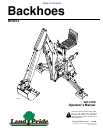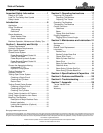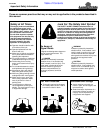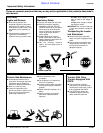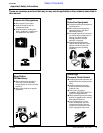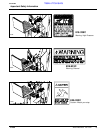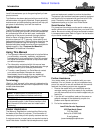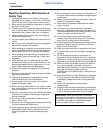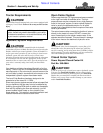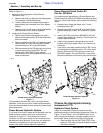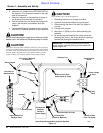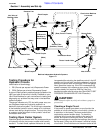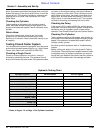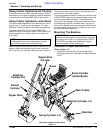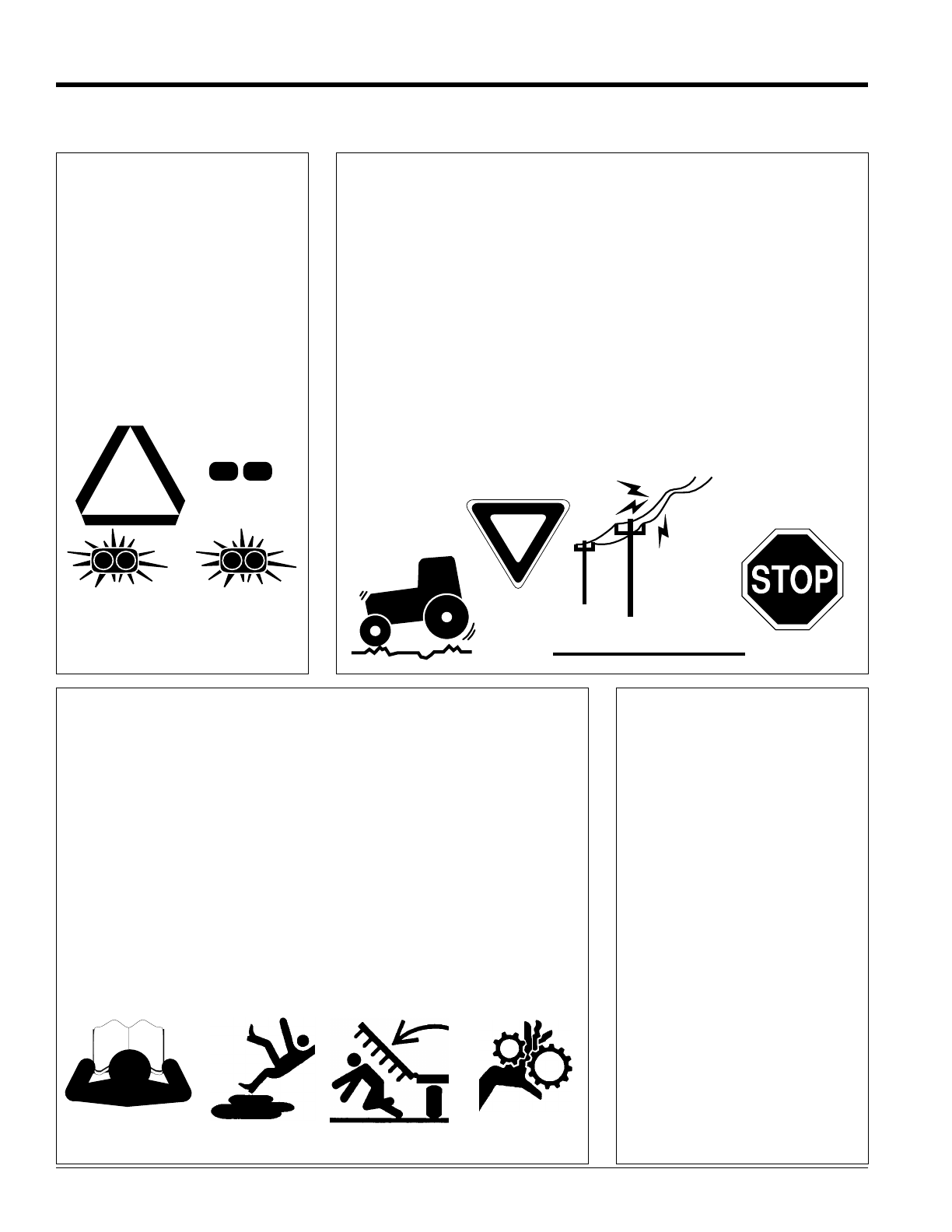
2
Important Safety Information
BH3512 Backhoes 340-131M
7/14/08
Land Pride
Table of Contents
These are common practices that may or may not be applicable to the products described in
this manual.
Transport
Machinery Safely
▲ Comply with state and local laws.
▲ Maximum transport speed for
implement is 20 mph. DO NOT
EXCEED. Never travel at a speed
which does not allow adequate
control of steering and stopping.
Some rough terrain require a
slower speed.
▲ Sudden braking can cause a
towed load to swerve and upset.
Reduce speed if towed load is not
equipped with brakes.
▲ Use the following maximum
speed - tow load weight ratios as
a guideline:
20 mph when weight is less
than or equal to the weight of
tractor.
10 mph when weight is double
the weight of tractor.
IMPORTANT: Do not tow a load that
is more than double the weight of
tractor.
Transporting the Loader
and Attachment
▲ Always drive up the ramp with
heavy end uphill. Engage parking
brake.
▲ Secure loader and attachments
using tiedowns and chains. Use
towing vehicle and trailer of
adequate capacity.
Use Safety
Lights and Devices
▲ Slow moving tractors, self-
propelled equipment, and towed
implements can create a hazard
when driven on public roads. They
are difficult to see, especially at
night.
▲ Flashing warning lights and turn
signals are recommended
whenever driving on public roads.
Practice Safe Maintenance
▲ Understand procedure before
doing work. Use proper tools and
equipment, refer to Operator’s
Manual for additional information.
▲ Work in a clean dry area.
▲ Lower the implement to the
ground, put tractor in park, turn off
engine, and remove key before
performing maintenance.
▲ Allow implement to cool
completely.
▲ Do not grease or oil implement
while it is in operation.
▲ Inspect all parts. Make sure parts
are in good condition & installed
properly.
▲ Remove buildup of grease, oil or
debris.
▲ Remove all tools and unused
parts from implement before
operation.
Tractors With Cabs
Tractors Equipped With
ROPS
▲ There should be sufficient
clearance for the operator when
mounted to a tractor with a cab or
that is equipped with ROPS.
▲ The ROPS may need to be
extended or flipped around to
obtain sufficient clearance.



